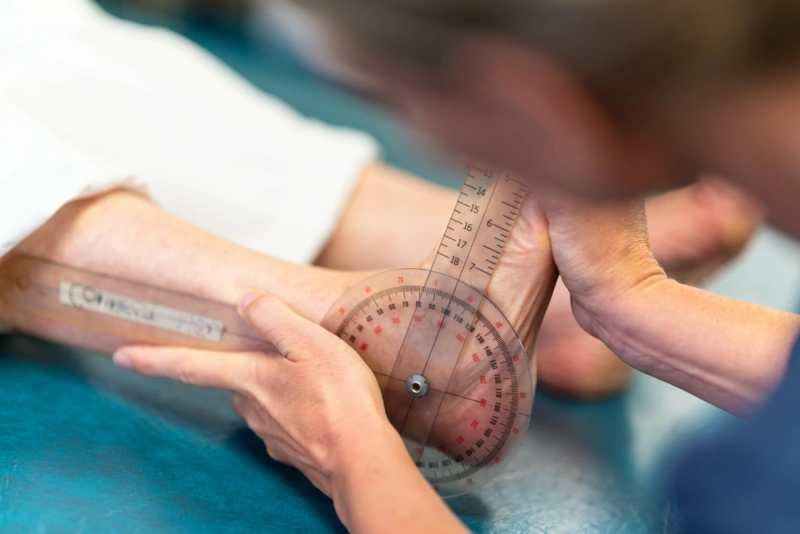What are the late effects of polio?
The Late Effects of Polio (LEoP) refers to a collection of new symptoms or functional decline experienced by individuals years, often decades, after recovering from the acute phase of poliomyelitis.
Some individuals develop Post-Polio Syndrome (PPS), a neurological condition that affects up to 40% of survivors. However, many people experience new symptoms consistent with Late Effects of Polio even without a PPS diagnosis.
People with LEoP may notice increased muscle weakness, fatigue, joint or muscle pain, and reduced endurance, even in areas not previously affected. Symptoms can be subtle at first, but gradually impact function and quality of life.
Each person's experience with LEoP is unique. Some may develop noticeable weakness or fatigue with minimal activity, while others notice difficulty with mobility or new musculoskeletal pain. Emotional or psychological effects, such as anxiety about decline or frustration with limitations, are also common.
Common presentations
The Late Effects of Polio often affect previously weakened or overused muscles and joints. Common symptoms include:
- New or worsening muscle weakness, particularly in limbs previously affected by polio
- Overwhelming fatigue not improved by rest
- Joint and muscle pain, often due to compensation or biomechanical strain
- Cold intolerance, particularly in affected limbs
- Breathing or swallowing difficulties, if polio previously affected respiratory or bulbar muscles
- Functional decline, such as reduced walking distance, falls, or increased reliance on mobility aids
What causes the Late Effects of Polio?
LEoP is believed to result from the long-term overuse of surviving motor neurons that had compensated for earlier loss during the original infection. Over time, these neurons can lose function due to wear and age-related changes.
Factors contributing to LEoP include:
- Ageing of the nervous system
- Chronic overuse or disuse of affected muscles
- Poor biomechanics and postural strain
- New medical conditions unrelated to polio
- Psychosocial stress or adjustment challenges
Diagnosis
Diagnosing LEoP involves a thorough neurological history and physical assessment to rule out other causes of new symptoms. There is no definitive test that confirms PPS, and diagnosis is made by excluding other conditions. A neurologist may perform:
- Electromyography (EMG) to assess motor neuron function
- Imaging (MRI, ultrasound) to investigate musculoskeletal or spinal involvement
- Functional assessments to evaluate mobility, endurance, and postural control
It’s important to differentiate LEoP from other age-related changes or conditions such as arthritis, neuropathies, or spinal degeneration.
How we can help
Through cann Charitable Trust, we provide specialised assessment and rehabilitation for individuals experiencing the Late Effects of Polio.
Our physiotherapists and occupational therapists are trained in neuromuscular management and understand the unique challenges faced by polio survivors. We focus on:
- Personalised assessment of strength, fatigue, mobility, and functional challenges
- Education on pacing, joint protection, and energy conservation
- Tailored rehabilitation plans aimed at preserving function while preventing overuse
- Telehealth options for those in remote or regional areas
Our goal is to support you in maintaining independence and living confidently with expert care.

Need support
Are you experiencing the late effects of polio?
Whether your symptoms are mild or more complex, support is available to help you manage the physical impacts of polio with confidence. If you’ve previously had a confirmed diagnosis of polio — even many years ago — you may be eligible for a C.O.R.E. support package through our national network.
Treatment and management of the late effects of polio
There is no cure for LEoP, but many strategies can help reduce symptoms and improve quality of life. Management focuses on conserving energy, protecting joints, and maximising safe, sustainable movement.
Medical Management
While medications have limited benefit for LEoP itself, your healthcare team may consider:
- Pain management (e.g. anti-inflammatories, neuropathic pain agents)
- Sleep support if fatigue or pain impacts rest
- Referral to respiratory or neurology services if breathing, swallowing, or other neurological symptoms are present
- Management of coexisting conditions (e.g. diabetes, arthritis, spinal issues)
Physical and Functional Management
Physiotherapy and occupational therapy can support:
- Energy conservation techniques (pacing, planning, priority setting)
- Optimising movement and posture to prevent joint stress and falls
- Gentle strength maintenance (not aggressive strengthening)
- Walking aid and orthotic prescription
- Breathing or voice support if needed
- Splinting or bracing for foot drop or instability
- Home and environmental modifications
Our clinicians work with you to develop sustainable routines and realistic goals that respect your body’s limits while preserving what matters most to you.
Self-Management and lifestyle
You may be encouraged to:
- Use pacing and rest strategies throughout the day
- Perform gentle, low-resistance exercise (e.g. water walking, stretching, supported cycling)
- Avoid overexertion or “pushing through” fatigue
- Plan for equipment needs early to reduce injury risk
- Connect with others with lived experience
- Maintain emotional wellbeing through mindfulness, therapy, or peer support
Our approach
At cann, we tailor your care to your goals, values, and abilities. Our approach includes:
- Listening to your story and working with your goals
- Helping you navigate fatigue and avoid overuse
- Collaborating with your wider medical team
- Building confidence and function at your own pace
We aim to help you feel seen, supported, and empowered.
Additional Resources
Disclaimer
This resource is provided for general information only. It is not a substitute for professional medical advice, diagnosis, or treatment. Always seek the guidance of your GP, physiotherapist, or another qualified health professional before making changes. cann Charitable Trust accepts no responsibility for any outcomes resulting from use of this material.








